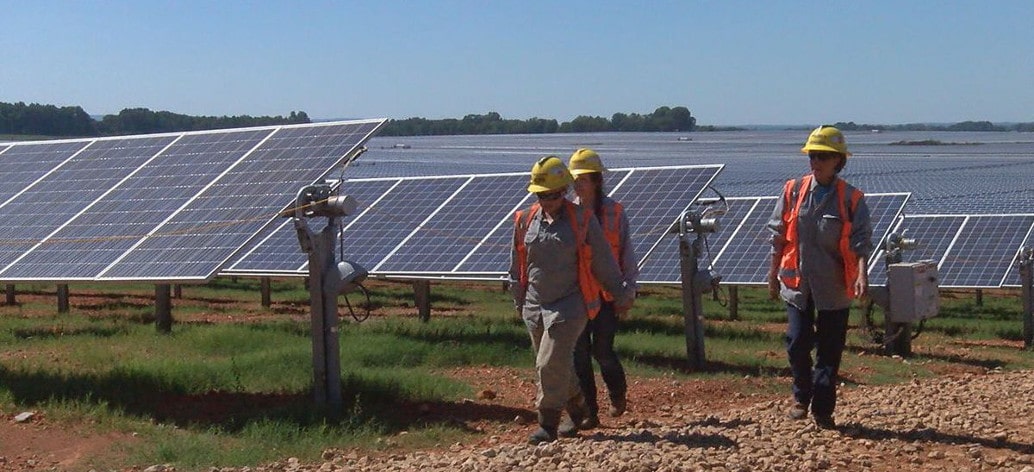The energy transition has come to the utility sector. Only a month after Xcel Energy unveiled a plan to move to 100% carbon-free electricity by 2050, Florida Power and Light Company (FPL) announced today that it will install more than 30 million solar panels by 2030 under its “30 x 30” plan.
It’s not clear exactly what capacity this would translate to, as the goal is measured in solar panels, not watts. However with 72-cell modules running in the 330-360 watt range – and with First Solar’s Series 6 clocking in at 420 watts, this should mean at least 10 GW of solar, or around 1 GW of solar each year.
This is roughly 10% as large as the annual U.S. solar market at present, and more than 15% of the large-scale solar market. As such this would represent an unprecedented level of deployment for a U.S. utility.
FPL also says that it has secured sites for these projects. Other than that the utility has shared few details, and while it states that this plan will involve “unprecedented investments in advanced and innovative battery storage technology”, it does not state what capacity of batteries it is planning or by when.
However, the utility referenced that it has already begun pairing batteries with its solar plants, which includes building the largest solar plus storage installation in the nation, so co-location is definitely on the table.
Shifting resources
And while this plan is groundbreaking, it can also be seen as inevitable. FPL’s parent company NextEra is the largest developer of wind and solar projects in the United States. And while this has mostly meant solar outside of FPL’s service area, the utility has also started to build large-scale solar, including using a mechanism that requires its customers to pay for the construction in advance through their electricity bills, called “rate-basing.”
In many parts of the country including Florida, large-scale solar is now the cheapest form of electricity generation. And if solar is cheaper than the alternatives and FPL can rate-base it, there is really no reason not to build a massive amount of large-scale solar and treat it like any other generation source.
As FPL is building all of this solar, it is also shutting down its dirtiest generation. The company notes that it has been phasing out oil-fired generation since 2001, and will shut down its last coal plant in Florida this year. However, like many utilities, it is not yet ready to give up gas or nuclear power, and it’s putting on two large gas-fired plants while keeping its Turkey Point and St. Lucie nuclear plants.
FPL estimates that the combination of solar and nuclear power will mean that 40% of its generation will be emissions-free by 2030, even when accounting for population growth beyond the more than 10 million Florida residents that it currently serves.
“We’re not satisfied with the status quo and understand that our customers expect even more from us as energy experts and industry leaders,” notes FPL President and CEO Eric Silagy.
A role for rooftop?
What is not clear at this time is whether or not there will be a role for rooftop solar and other forms of distributed generation in this plan, and past experience would suggest not. Like nearly all utilities FPL has attempted to undermine the economics of customer- and third-party owned solar.
In 2016 FPL was among three utilities that generously funded a deceptive ballot campaign to undermine the rights of its customers to install solar, which was described by one of the initiative’s consultants as “political jiu-jitsu.”
If anything, installing large volumes of utility-scale solar could be a way to comply with a customer demand that the utility participate in greening its fleet, without having these customers install solar themselves.
At the time of publication pv magazine USA was still waiting for an opportunity to speak with FPL about these and other details, and we will update this story as more information becomes available.
This content is protected by copyright and may not be reused. If you want to cooperate with us and would like to reuse some of our content, please contact: editors@pv-magazine.com.









I wonder how much of this is backend loaded. Build 1GW total in the first 9 years and then say you can’t possibly build 9GW in the last year so give up.
I hope I’m wrong and they actually do 1GW+ a year.